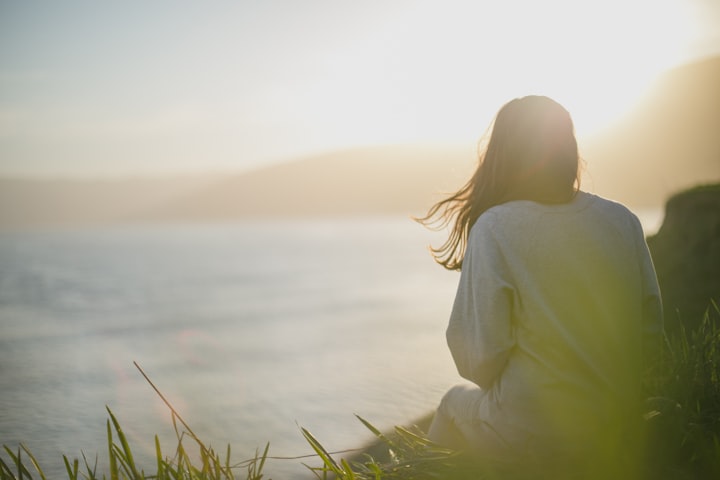My Slow Movement Manifesto
Four ways to keep moving while we all slow down.

What if we embraced a slower pace instead of pushing against the stillness?
As the world is slowing down, many of us are feeling the dangerous pull of an opposing force: the pressure to be more productive, forge ahead in our careers, and achieve the "perfect" lockdown body. In addition to the negative mental health impacts of this mindset, the exercise and wellness industry can be damagingly ableist, catering solely to those with high levels of fitness and bodily autonomy. My slow movement mantra is this: All bodies are beautiful. All bodies deserve the judgement-free joy of easy movement.
These four healthy-body-habits welcome all fitness levels, and can easily be adapted to suit all bodies, regardless of injury or ability. Movement should be a celebratory expression of the human form, however your unique and precious body is designed to move!

Slow Movement as Self Care
In 2017, two days after my 24th birthday and two weeks after quitting my full-time job, I was struck by an 18-wheel semi-truck barreling down a Louisiana freeway. I walked away with a constellation of cuts, bumps and bruises, feeling grateful the damage hadn't been worse. But I didn’t realize that my nervous system had gone into shock. In the days, weeks, and months that followed, my body would burn from the inside out, radiating with pain as I healed from severe nerve damage.
I had always favored high-impact exercise, practicing kick-boxing and women’s rugby throughout high school, and then, in college, finding sweltering yoga classes that left me panting and trickling with sweat. In the blink of an eye, none of that was possible. Walking for a few hours, or even sitting upright, could leave my fragile body aching for days.
As I started to heal from the car accident, I carefully, hesitantly began to move. My body was far too weak for cardio or weightlifting, but I found solace in my gentle routine of morning stretches. Each morning I would fix a cup of coffee, tap on a feel-good playlist and begin to move. I could bend forwards and back, twist gently, and extend slowly for about 15 minutes before tiring.
As winter turned to spring, I found more movement, and more joy in that movement, than I ever had before. Years later, my love for slow movement has never waned. (Although I’ve reincorporated some high-impact activities, like hiking through Patagonia last year.) Sometimes, I still have pain, but I know that slow movement is all the medicine I need.

4 Types of Slow Movement
Whether you’re isolating at home, healing from an injury, or simply embracing a slower pace of life, these four practices are perfectly tailored for all strong and serene bodies.
1. Yin Yoga
Even experienced yogis might discover an array of new benefits by trying yin yoga. This slow-paced yoga practice focuses on postures that stimulate the body’s meridians by placing moderate pressure on the connective tissue. Holding each asana for 45 seconds to 5 minutes increases circulation and improves flexibility. Influenced by both Hatha Yoga and ancient Chinese medicine, yin yoga seeks to improve the mind-body connection with slow, purposeful movement.
2. Tai Chi and Qigong
These ancient Chinese traditions marry movement with mindfulness. While tai chi is actually a form of martial arts, requiring specific positions and forms, qigong is a free-form health system with highly adaptable positions. Both forms of movement include a beneficial combination of body movement and breathing techniques. No matter your fitness level, these low-impact "meditations in motion" are an amazing way to increase muscle strength, flexibility and balance.
3. Moving Meditation
Why not find your daily ‘om’ while simultaneously getting your steps in? Long practiced by Buddhist monks, moving meditation is a mindfulness practice accompanied by a slow and methodical movement, like walking. Instead of focusing on the breathe or a mantra, the sensation of each footstep becomes your grounding force. Similar to a sitting meditation, moving meditation offers a range of incentives, like improved mental clarity and cognitive health.
4. Massage Therapy
Practiced on oneself or another, massage is a peaceful technique that relieves tension, smoothes muscles and increases circulation. The health benefits of massage, including self-massage, are numerous, and include lymphatic drainage, the reduction of stress hormones, and improved recovery of soft tissue injuries.
Bonus: Massage therapy can strengthen your hands, wrists and arm muscles. For a unique experience, incorporate Japanese dry brushing, Chinese gua sha, essential oils and other massage tools into your practice.
Slow Movement Manifesto: YouTube Playlist
Ten ways to find tranquility through slow movement.
About the Creator
Rebecca Leigh
Rebecca writes about furniture design and luxury interiors. A veteran digital nomad, she currently resides between Portugal and New Zealand. Find her on Instagram at @rebecca_dangler.








Comments
There are no comments for this story
Be the first to respond and start the conversation.